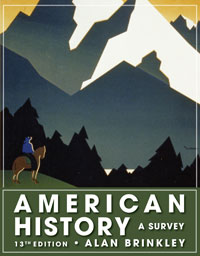1 A) favorable government policies B) an abundance of basic raw materials C) a growing labor supply and expanding market D) a high level of basic research in pure science E) the emergence of new technology 2 A) reduced the amount of track miles in the United States. B) increased the amount of track in the United States by 10,000 miles. C) increased the amount of track in the United States by 40,000 miles. D) increased the amount of track in the United States by 100,000 miles. E) doubled the amount of track miles in the United States. 3 A) mining coal. B) producing steel. C) pasteurizing milk. D) refining petroleum. E) producing cast iron. 4 A) a source of fuel to satisfy the growing American demand. B) the producer of a lubricant for the machines of the steel industry. C) a replacement for coal as an energy source. D) a source of petrochemicals. E) All these answers are correct. 5 A) scientific management in industry. B) a revival of pride in craftsmanship. C) a movement to organize unskilled labor. D) a movement away from mass-produced clothing. E) a method of industrial automation. 6 A) invention of the internal combustion engine. B) introduction of structured management organization. C) investment in research and development. D) use of the moving assembly line to achieve mass production. E) introduction of the Model T Ford automobile. 7 A) they were the nation's biggest investors. B) they increased the miles of track in the United States by over six times during these four decades. C) they democratized control over the nation's transportation system. D) they were built largely through government subsidies. E) they promoted economic development along their rail lines. 8 A) steel. B) banking. C) shipping. D) petroleum. E) telephones. 9 A) caveat emptor. B) accelerated depreciation. C) tax-free capital accumulation. D) exemption allowances. E) limited liability. 10 A) all the employees belong to one big union organized by industry rather than by craft. B) management and labor share equally in the profits through an elaborate sharing arrangement. C) employees of different ethnic origins work together on the assembly line. D) a single company controls the entire industrial process from source of raw materials to the final market. E) a combination of firms in a given industry are merged into one organization. 11 A) steel. B) banking. C) shipping. D) petroleum. E) mining. 12 A) trust B) cartel C) holding company D) joint-stock company E) conglomerate 13 A) was proved by the frequent rise of working-class Americans to the upper economic classes. B) reduced the amount of corruption in American industry. C) was reaffirmed by the favorable odds of becoming a millionaire. D) ignored the fact that most millionaires came from families of wealth and privilege. E) fostered industrial corruption. 14 A) social gospel B) instant creation C) biblical inerrancy D) survival of the fittest E) social gospel and instant creation 15 A) humans are descended from lower animals. B) free competition promotes human progress. C) the government should ease the lot of the poor. D) government ownership of the majority of the means of production is desirable. E) accumulation of great wealth improves the lot of society in general. 16 A) socialism B) Social Darwinism C) classical economics D) the Gospel of Wealth E) a guilty conscience 17 A) an income tax. B) a sales tax. C) a tax on "unearned increments." D) a tax on "earned increments." E) a value-added tax. 18 A) the rich get richer; the poor get poorer. B) poor boy makes good by hard work, perseverance, and luck. C) average guy gets wealthy through cunning, guile, and questionable business practices. D) rich man has conversion and realizes that philanthropy and government regulation are the only ways to promote an equitable society. E) All these answers are correct except that a poor boy makes good by hard work, perseverance, and luck. 19 A) little or no worker's compensation for injury B) no government health and safety regulations C) declining standard of living, in both absolute and relative terms D) no job security and layoffs due to seasonal, cyclical, or technological factors E) lack of job training programs 20 A) used terrorist tactics to intimidate the coal operators in Pennsylvania. B) received broad support from middle-class Americans. C) were among the more conservative unionists. D) gained their broadest support in the cities of Chicago and New York. E) fomented the Haymarket bombing. 21 A) a 10 percent cut in wages. B) the infiltration of unions by anarchists. C) the refusal of the owners to adopt safety measures. D) the refusal of the owners to agree to cost-of-living increases. E) All these answers are correct. 22 A) gender equity between male and female industrial workers. B) reforming and altering the capitalist system so that workers would own part of the corporations they worked for. C) immediate gains for its members, such as higher wages, shorter hours, and better working conditions. D) mass organization of all laborers skilled, unskilled, and agricultural. E) creating a pathway for women into the work force. 23 A) unions won their demand for an eight-hour day. B) the American socialist movement received a great boost. C) the use of Pinkerton guards as strikebreakers was outlawed. D) it led to federal intervention in labor union matters. E) it stimulated a hysterical wave of fear of anarchism and its alleged connection with unionism. 24 A) both involved the American Railway Union. B) federal troops were used to restore order in both. C) both started when management ordered pay cuts for some workers. D) strikers fought Pinkerton guards in violent pitched battles at both locations. E) both took place in Chicago.





